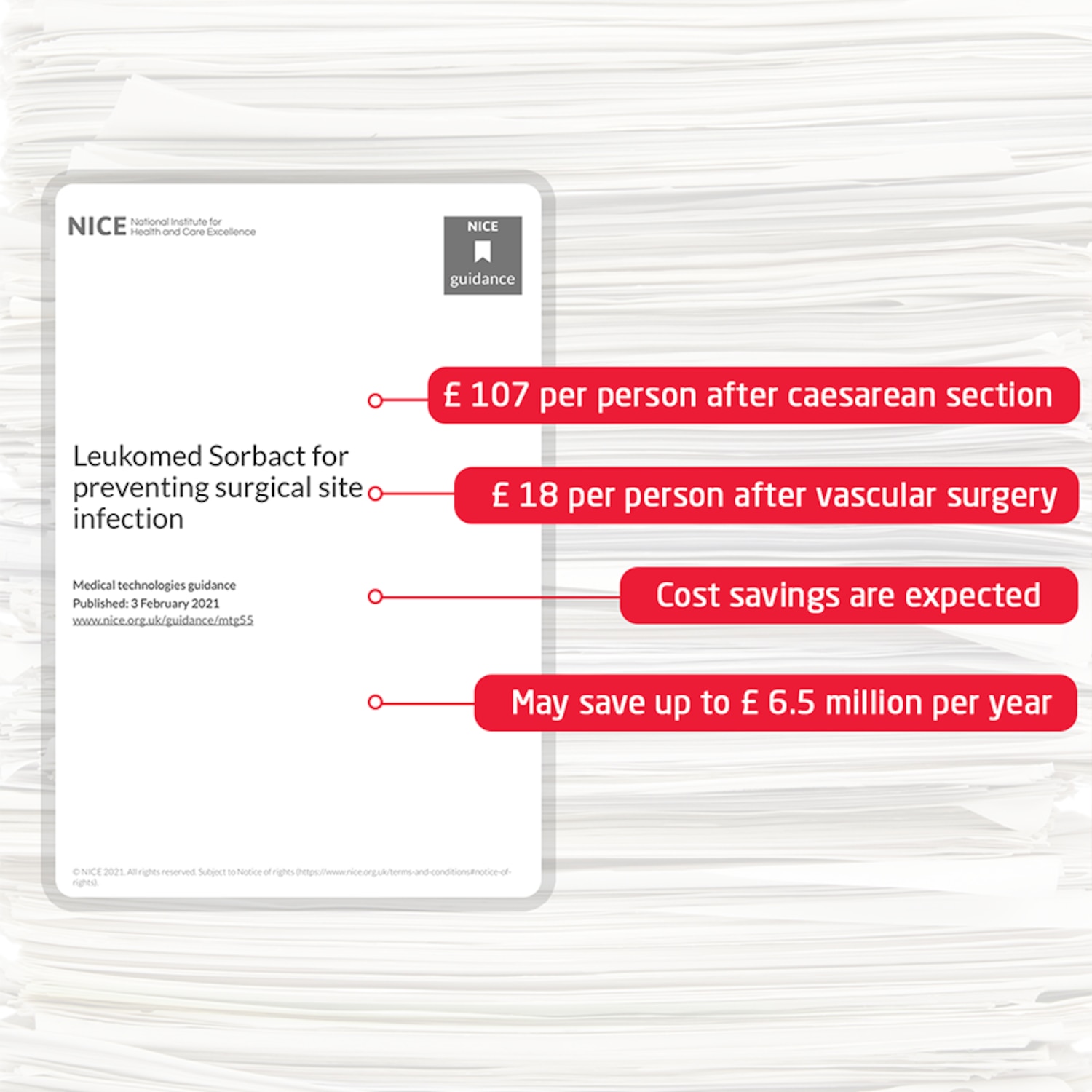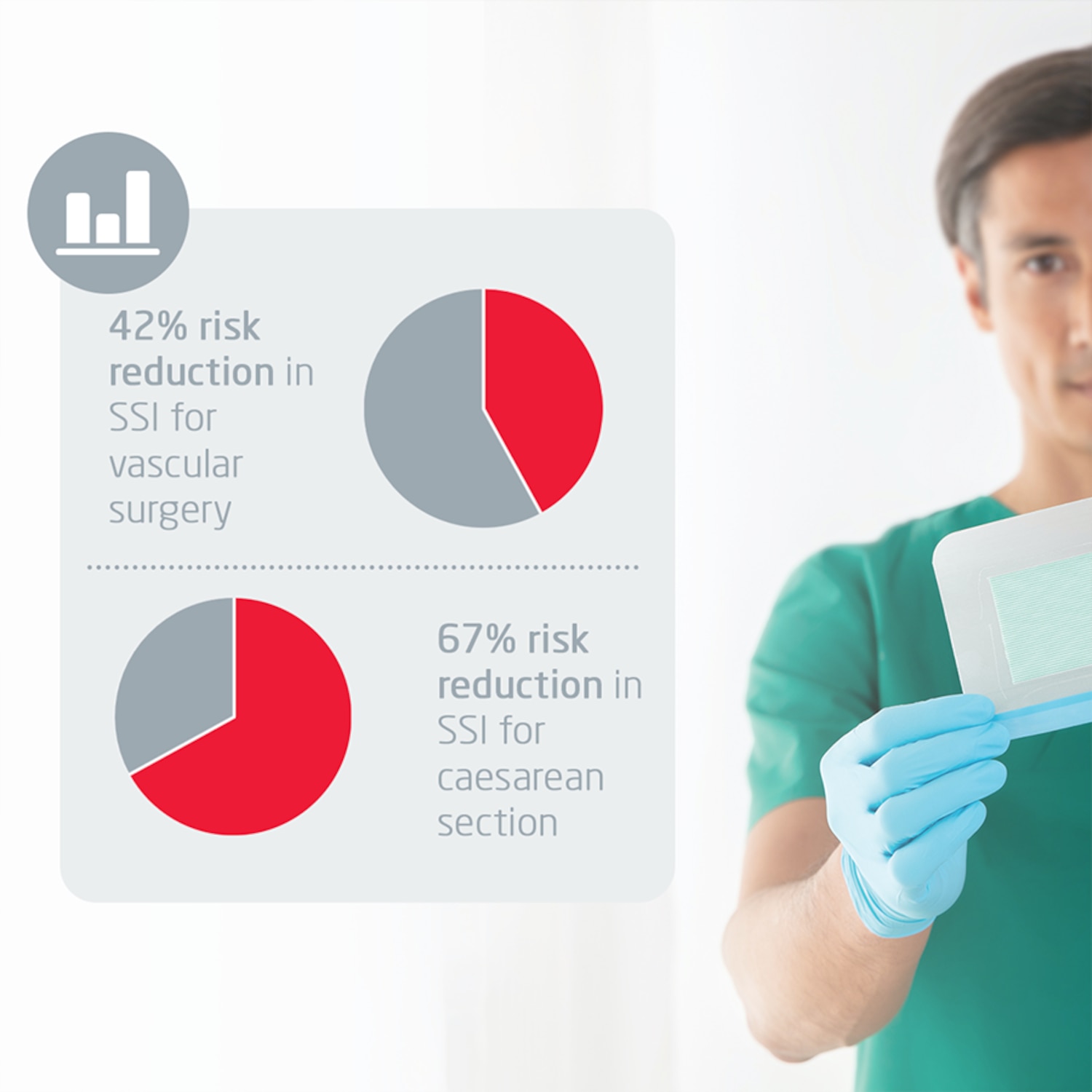Leukomed® Sorbact®: potential to save the NHS up to £6.5 million through reduced hospital admissions for SSI.
SSIs are the third most commonly reported type of healthcare-acquired infection and the most costly1. They place a significant impact on patient welfare2 as well as presenting a heavy financial burden for the NHS.3
Leukomed Sorbact is an innovative post-operative film dressing with a purely physical mode of action, used to prevent surgical site infection (SSI) in closed surgical wounds. New Medical Technologies Guidance from NICE supports the case for adopting Leukomed Sorbact as part of an SSI prevention strategy after caesarean section and vascular surgery*
The guidance states that Leukomed Sorbact:
- reduces SSI in caesarean section and vascular surgery
- may reduce antibiotic use
- may reduce readmissions from wound complications
Potential cost savings of up to £6.5 million for the NHS
Cost modelling shows that the reduced rate of surgical site infection with Leukomed Sorbact compared with standard surgical dressings leads to savings of:
- £107 per person after caesarean section
- £18 per person after vascular surgery
By adopting this technology, the NHS may save up to £5.3 million per year for caesarean section and up to £1.2 million per year for vascular surgery.

Potential to reduce hospital admissions
In addition, the evidence reviewed suggests that Leukomed Sorbact:
- reduces SSI in caesarean section and vascular surgery
- may reduce antibiotic use
- may reduce readmissions from wound complications
Cost savings are anticipated as Leukomed Sorbact is expected to reduce re-admissions and shorten the length of stay in hospital. For more details see the NICE resource impact report*.
Reducing SSI rates can reduce readmissions, antibiotic use, offer cost savings and benefit patient quality of life.4
Click here for full product and ordering information.
Supported by clinical evidence
The clinical evidence considered by NICE suggests that Leukomed Sorbact can reduce SSI risk in patients post caesarean section by up to 67% versus standard of care6,7, and by up to 42% in patients post vascular surgery.8,9
For more information on Leukomed Sorbact and the support available, please click here to send an email enquiry.
*© NICE 2021 Leukomed Sorbact for preventing surgical site infection.
Available from www.nice.org.uk/guidance/mtg55. All rights reserved. Subject to Notice of rights.
NICE guidance is prepared for the National Health Service in England. All NICE guidance is subject to regular review and may be updated or withdrawn. NICE accepts no responsibility for the use of its content in this product/publication.








